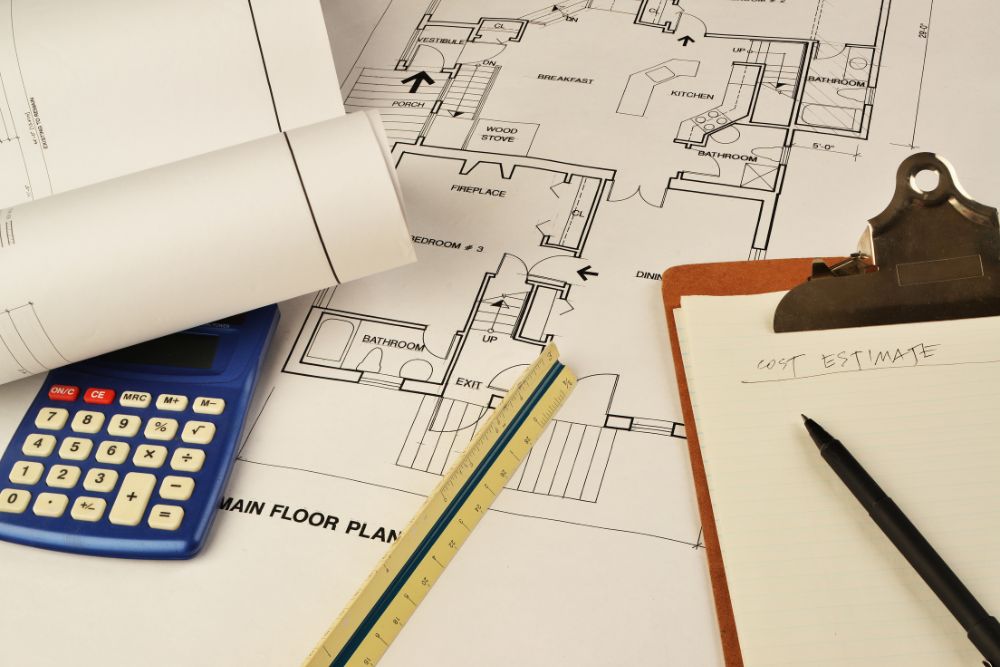As cities grow and housing prices rise, many homeowners are seeking innovative ways to utilize their properties. One solution that is gaining popularity is the Accessory Dwelling Unit (ADU). An ADU is a small, self-contained home on the same lot as your main house. It can provide extra living space without the need to move or buy a new property.
Accessory Dwelling Units can take many forms, such as a detached guesthouse, a converted garage, or a basement apartment. They are not just extra rooms; they can be used for family members, guests, or rented out to earn extra income.
In this guide, we will discuss why Accessory Dwelling Units are gaining popularity, the different types, their benefits, potential challenges, and tips for homeowners who want to add one.
What Is an Accessory Dwelling Unit (ADU)?
An Accessory Dwelling Unit (ADU) is a small, separate living space built on the same property as a main home. It functions as a complete home with its own kitchen, bathroom, sleeping area, and entrance. Unlike a simple extra room or guest space, an ADU is designed for long-term living and can be used by family members, renters, or guests.
These units are often built to create more housing options without the need for new land. They fit well in cities and suburbs where space is limited, but the demand for housing continues to grow. Because ADUs are smaller and more efficient, they also use less energy and resources than traditional houses.
Homeowners build ADUs for many reasons. Some want to create a private space for aging parents or grown children. Others see them as a smart investment that can bring steady rental income. Whether it’s attached to the main house or built as a separate structure, an Accessory Dwelling Unit adds flexibility, comfort, and value to any property.
What are the main Types of ADUs?
There are several types of Accessory Dwelling Units (ADUs), and each one fits different needs, property sizes, and budgets. The type you choose often depends on the amount of space you have, local building regulations, and how you plan to use the unit. Here are the main types of ADUs:
1. Detached ADU
A detached ADU is an entirely separate building located on the same property as your main house. It’s often built in the backyard and looks like a small cottage or guesthouse. This type offers the most privacy for both the homeowner and the person living in the unit. Detached ADUs are great for renting out or for giving family members their own space.
2. Attached ADU
An attached ADU is connected to your main home, usually sharing one wall. It might be an addition built on the side or back of the house. Attached ADUs are convenient because they share utilities and are often cheaper to build than detached ones. They’re a good option if you want a close but private living space for guests or relatives.
3. Garage Conversion ADU
If you have an unused garage, you can turn it into a comfortable living space. A garage conversion ADU is a popular choice for homeowners who want to save on construction costs since the structure already exists. These units can include a small kitchen, bathroom, and sleeping area while keeping the outside design similar to the main house.
4. Basement ADU
A basement ADU makes use of the existing lower level of your home. It’s ideal for properties with a large basement that can be remodeled into a separate living area. With proper lighting, ventilation, and soundproofing, a basement ADU can become a cozy and private home space for family or tenants.
5. Over-Garage or Loft ADU
Another option is building an ADU above a garage or as a loft addition. This design makes good use of vertical space and keeps the yard open. These units often have great views and work well for rentals or studios.
Key Characteristics That Make Accessory Dwelling Units Popular
Accessory Dwelling Units (ADUs) come with several features that make them increasingly popular among homeowners. These characteristics not only improve property use but also bring long-term financial and lifestyle benefits.
1. Built for Small Spaces
ADUs don’t require large areas for construction. They can be built in small or irregular spaces, making them ideal for properties with limited land. Their designs can easily be adjusted to fit the available area. This flexibility allows homeowners to turn unused corners or empty yards into valuable living spaces.
2. Utilize Unused Property Areas
One of the biggest advantages of an ADU is its ability to transform unused or wasted space. Whether it’s a side yard, backyard, or garage, these spaces can be converted into fully functional living units. This turns underused property areas into something valuable and useful for both homeowners and tenants.
3. Affordable to Build
Because Accessory Dwelling Units are smaller than regular houses, they require fewer materials and lower labor costs. Many ADUs are built using lightweight materials instead of heavy concrete or steel, which helps keep construction costs down. This makes them a budget-friendly alternative to building a new home or large extension, especially in areas with high housing costs like California.
4. Increase Property Value
Adding an ADU can significantly raise the overall value of a property. The additional living space and functionality make the home more attractive to potential buyers. Compared to other home improvement projects, building an ADU is often more affordable but offers a strong return on investment.
5. Potential for Rental Income
An Accessory Dwelling Unit can be a great source of extra income. Homeowners can rent out the space to long-term tenants or use it as a short-term rental. This additional income can help cover household expenses, mortgage payments, or even fund future renovations.
6. Extra Space for Personal Use
Even if you don’t want to rent it out, an ADU offers extra space for personal use. It can be turned into a guest suite, home office, gym, or hobby room. This flexibility allows homeowners to enjoy more freedom and comfort without having to move to a larger property.
Benefits of Having an Accessory Dwelling Unit (ADU)
Accessory Dwelling Units (ADUs) offer many advantages that make them appealing to homeowners and communities alike. From financial savings to environmental sustainability, these units bring both practical and long-term value.
Here are some key benefits of having an ADU:
- Affordable Housing Option: ADUs provide flexible and cost-effective living spaces within city neighborhoods.
- Efficient Use of Infrastructure: They use existing roads, schools, and sewer systems, reducing the need for new infrastructure.
- Environmentally Friendly: ADUs are smaller, use fewer materials, and consume less energy for both construction and daily use.
- Sustainable Development: By utilizing existing land, they help prevent urban sprawl and support eco-friendly growth.
- Community-Friendly Design: ADUs blend well into residential areas without changing the neighborhood’s appearance.
- Supports Family Living: They allow families to live closer together, which is ideal for aging parents or adult children.
- Extra Income Source: Homeowners can rent out ADUs to generate steady rental income.
- Increase in Property Value: Adding an ADU can boost the overall value and functionality of a property.
ADUs: Pros and Cons
Like any housing option, Accessory Dwelling Units (ADUs) come with both advantages and challenges. Understanding these can help homeowners decide whether building an ADU is the right choice for their property and lifestyle.
Here are some of the main pros and cons:
Pros of ADUs | Cons of ADUs |
Cheaper to build than a new house. | Still needs a good amount of money to build. |
Can bring in extra rent money. | Getting permits and following rules can be difficult. |
Great for parents, kids, or guests to live close by. | Small size means less space to live or store things. |
Adds more value to your property. | Needs extra care, cleaning, and maintenance. |
Good for the environment and saves land. | May reduce privacy if others live nearby. |
Tips for Homeowners Considering an ADU
Building an Accessory Dwelling Unit (ADU) can be a smart investment, but it requires careful planning to make sure everything goes smoothly. Before you start construction, it’s important to understand your goals, local rules, and budget.
Here are some useful tips for homeowners thinking about adding an ADU:
- Check Local Regulations: Always review your city’s zoning laws, building codes, and permit requirements before starting.
- Set a Realistic Budget: Plan your finances early, including design, permits, labor, and materials.
- Choose the Right Type: Pick the ADU type, attached, detached, garage, or basement, that fits your property and needs.
- Work with Professionals: Hire experienced contractors, designers, or estimators to ensure accurate planning and construction.
- Focus on Energy Efficiency: Use energy-saving materials and appliances to reduce long-term costs.
- Plan for Privacy: Design the unit in a way that gives both the main house and ADU enough privacy.
- Think Long-Term: Consider how the ADU will be used in the future, for rental income, family space, or resale value.
- Get a Construction Estimate: Before starting, get a professional estimate to understand real costs and avoid surprises.
FAQs
What is the function of ADU?
An Accessory Dwelling Unit (ADU) serves as a secondary living space on a property. It provides independent housing with its own kitchen, bathroom, and entrance, ideal for family members, guests, or rental income.
What is an ADU in HVAC?
In HVAC systems, an ADU refers to the heating, cooling, and ventilation setup designed for accessory dwelling units. It ensures proper air circulation and temperature control in smaller, separate living spaces.
What is the minimum bedroom size for an ADU?
The minimum bedroom size for an ADU typically ranges from 70 to 120 square feet, depending on local building codes. It should be large enough to fit essential furniture and allow comfortable movement.
What is the minimum distance between the house and the ADU?
The minimum distance between a main house and an ADU usually ranges from 6 to 10 feet, based on local zoning rules. This space ensures fire safety, privacy, and accessibility between both structures.
What is the difference between an ADU and a tiny house?
An ADU is built on a property with an existing home, while a tiny house is often a standalone or mobile unit. ADUs must follow local building codes, whereas tiny houses may have more flexible regulations.
Conclusion
Accessory Dwelling Units (ADUs) are becoming a popular and smart way to add more living space. They make good use of existing land and can serve many purposes, like housing family members, earning rental income, or creating a private guest area. ADUs also support affordable and eco-friendly living.
With proper planning and expert help, an ADU can increase your property’s value and give you more flexibility for the future.
If you’re planning to build an Accessory Dwelling Unit, contact Prime Estimation today. We will help you with accurate cost estimates and professional guidance to make your project simple, affordable, and successful.












